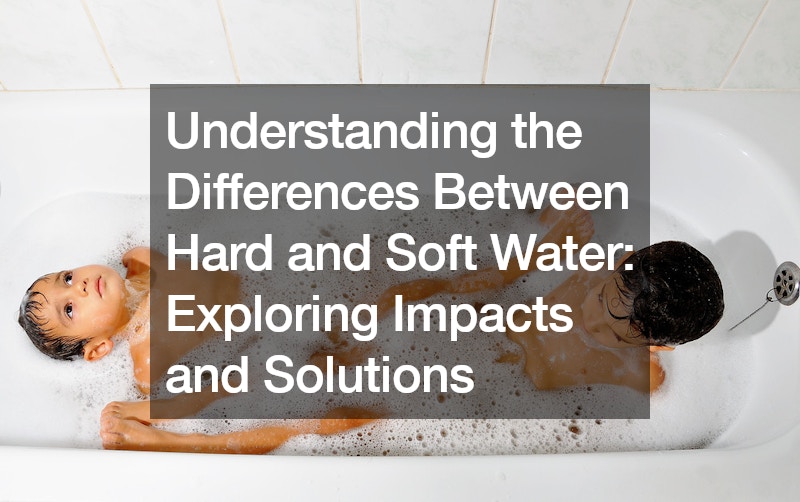Water, the elixir of life, is a substance so integral to our existence that its quality significantly affects various aspects of our daily routines. Beyond the clear and flavorless appearance that unites all water, the differences between hard and soft water reveal a fascinating world of mineral compositions and their tangible impacts on our lives. In this exploration, we’ll delve deeper into the broader implications of water hardness, from the environmental factors influencing it to the implications for appliances and plumbing.
Environmental Factors and Water Hardness
The mineral content of water is a direct result of its journey through the environment. As water flows through rivers, wells, and other waterways, it picks up minerals from rocks and soil, leading to the development of hard water.
In contrast, soft water, often found in rainwater, hasn’t yet encountered these mineral-rich sources.
Understanding the environmental factors influencing water hardness is crucial, as it sheds light on the dynamic nature of water quality. The hydrologic cycle plays a pivotal role, causing water to fluctuate between hard and soft states. Oceans and streams tend to host hard water due to the accumulation of minerals. However, when water evaporates, such as during rainfall, it leaves these minerals behind, resulting in softer water.
Appliances and Plumbing Challenges
The impact of water hardness extends beyond the bathtub and seeps into the functionality of household appliances. Consider your coffee maker, dishwasher, or washing machine – all integral to modern living. Hard water, with its higher mineral content, can contribute to the buildup of limescale within these appliances. Over time, this accumulation can affect their efficiency and lifespan.
Appliances that rely on heating elements, such as water heaters, are particularly vulnerable to the effects of hard water. As water is heated, the minerals within it solidify, forming limescale deposits. These deposits not only decrease the efficiency of the appliances but can also lead to increased energy consumption as they act as insulators, requiring more energy to achieve the desired temperature.
In this context, the importance of water softening becomes apparent, not just for personal comfort but also for the preservation of household appliances. Residential water treatment solutions, ranging from chemical softeners to advanced filtration systems, offer a proactive approach to mitigating these challenges.
The Science Behind Soap and Cleaning Products
Beyond the bathtub test, the science behind how soap interacts with water provides valuable insights into the day-to-day challenges posed by hard water. Soap, a crucial component in personal and household cleanliness, relies on the ability to dissolve in water to create an effective lather.
In hard water, the minerals present, primarily calcium and magnesium, react with the components of soap, forming insoluble compounds. This chemical reaction not only reduces the lathering ability of soap but also contributes to the formation of soap scum – a common sight on shower walls and bathroom surfaces.
Understanding the chemistry of soap in the context of water hardness emphasizes the need for tailored cleaning solutions in regions with hard water. Manufacturers of cleaning products often formulate specific formulations designed to perform optimally in both hard and soft water conditions, recognizing the prevalence of varying water hardness levels.
Water Softening Technologies: A Closer Look
Residential water treatment plays a pivotal role in ensuring that water delivered to households meets certain quality standards. Boiling, a traditional method of softening water, is effective in eliminating some mineral content. However, for comprehensive water softening, especially in regions with high levels of permanent hardness, advanced technologies come into play.
Ion exchange water softeners, for example, use resin beads to replace calcium and magnesium ions with sodium ions, effectively reducing water hardness. Reverse osmosis systems employ a semi-permeable membrane to remove mineral ions, providing a thorough water softening solution. Exploring these technologies allows consumers to make informed choices based on their specific water quality needs.
Conclusion: Navigating the Waters of Water Quality
In understanding the differences between hard and soft water, we embark on a journey that goes beyond mere appearance. It involves comprehending the intricate relationships between water and the environment, recognizing the challenges posed to appliances, appreciating the chemistry behind soap interactions, and exploring the technological advancements in water softening.
Residential water treatment emerges as a key player in this narrative, offering solutions to enhance the quality of water available to households. As consumers, being informed about water hardness empowers us to make choices that not only cater to our comfort but also contribute to the sustainability and longevity of our appliances. In navigating the waters of water quality, the balance between hard and soft water becomes a conscious decision, ensuring a harmonious coexistence with this essential element of life.
.


